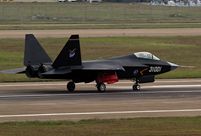 Bikini show in 2014 China Final of Miss Tourism World
Bikini show in 2014 China Final of Miss Tourism World
 Close-up view of August Aerobatic Team
Close-up view of August Aerobatic Team
 Goddesses married in 2014
Goddesses married in 2014
 Polar region photos raise worldwide awareness of global warming
Polar region photos raise worldwide awareness of global warming
 Get off at the last stop — Beijing Subway in vision
Get off at the last stop — Beijing Subway in vision
 Top 100 beauties in the world!
Top 100 beauties in the world!
 Gallery: Who is the most beautiful one?
Gallery: Who is the most beautiful one?
 If you like autumn, put your hands in the air!
If you like autumn, put your hands in the air!
 Fan Bingbing's "Queen style" in new play
Fan Bingbing's "Queen style" in new play
 Lingerie show at 2014 Miss China
Lingerie show at 2014 Miss China
BEIJING, Dec. 12 -- Over 1,400 kilometers of canal and pipeline began carrying water on Friday from China's longest river, the Yangtze, directly to the country's arid northern regions, including national capital of Beijing.
Completion of the scheme is major progress in the enormous south-north water diversion project, costing an estimated 500 billion yuan (about 80 billion U.S. dollars) and the largest of its kind in the world.
President Xi Jinping sent his congratulations to workers and people "who have made contributions" to the middle route project on Friday, calling the achievement a "major event" in the nation's modernization drive.
He said the success has come through ceaseless effort by hundreds of thousands of people. Construction began on Dec. 30, 2003.
Xi described the project as important strategic infrastructure to optimize water resources, boost sustainable economic and social development, and improve people's livelihoods.
The south-north water diversion project is another gargantuan feat of Chinese engineering, in the style of the Beijing-Hangzhou Grand Canal, the world's longest man-made river, constructed in the 13th century to transport grain between the south and north.
Water will eventually flow via eastern, middle and western routes via canals, pipelines and tunnels. It took eight years for engineers and workers to complete two 4,000-meter-long tunnels under the riverbed of the Yellow River, China's second largest.
The first-stage project of the eastern route went into operation last year, sending water to Shandong province. By 2050, as many as 440 million people could benefit from the diversion of 44.8 billion cubic meters of water each year.
The middle route's first-stage project begins at Danjiangkou reservoir in central province of Hubei and runs for 1,432 kilometers. It will supply 9.5 billion cubic meters of water per year to some 100 million people in the dry northern regions, including the cities of Beijing and Tianjin, and provinces of Henan and Hebei.
The water will cater to household, industrial and agricultural demand, benefiting more than 100 counties.
President Xi urged the route's management to protect the quality of water and to save water. Work still needs to be done to ensure the livelihoods and employment of those displaced for the construction.
More than 200,000 workers participated the construction and over 400,000 were displaced, including 345,000 people whose hometown was submerged at part of the massive Danjiangkou reservoir.
Premier Li Keqiang said the project will benefit both current and future generations, and urged the projects management team to ensure the security and stability of supply.
The project was conceived by late Chinese leader Mao Zedong in 1952 but only approved by the State Council in December 2002, after nearly half a century of debate.
The huge project has been widely hailed as an example that the Chinese people are capable to better their lives through hard efforts. But with the new waterway come new challenges, such as protection of water quality and unforeseen natural risks in the future.
 20 years on: Relocated Three Gorges residents through lens
20 years on: Relocated Three Gorges residents through lens PLA HK Garrison veterans leave behind beautiful smiles
PLA HK Garrison veterans leave behind beautiful smiles Representative beauties of each province in China
Representative beauties of each province in China Chestnut girl goes viral online
Chestnut girl goes viral online Victoria's Secret Fashion Show
Victoria's Secret Fashion Show In photos: Bright and brave female soldier of PLA
In photos: Bright and brave female soldier of PLA China's charming first lady
China's charming first lady Excellent photos of Zhuhai Air Show
Excellent photos of Zhuhai Air Show China's heavyweight aircraft
China's heavyweight aircraft Society needs consensus on street politics
Society needs consensus on street politics Policy bank plan gets mixed reaction
Policy bank plan gets mixed reaction  Shopaholics
Shopaholics  Hungry moments
Hungry momentsDay|Week|Month